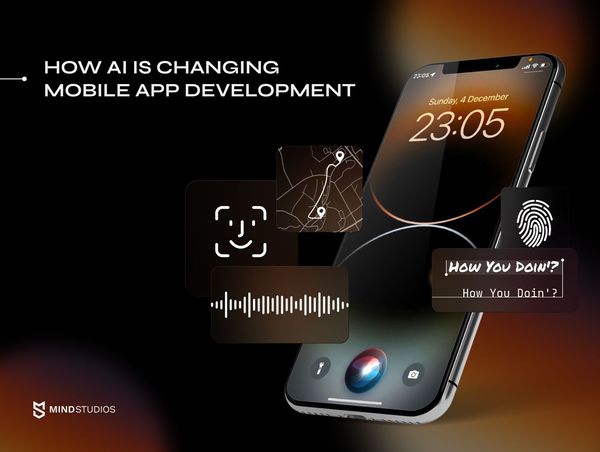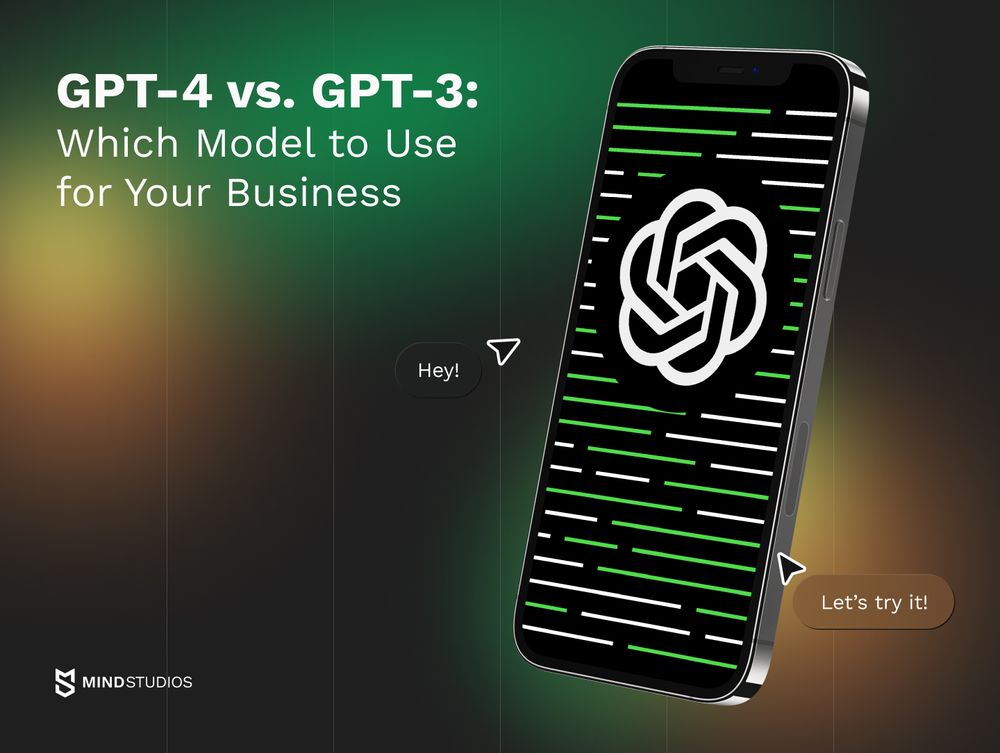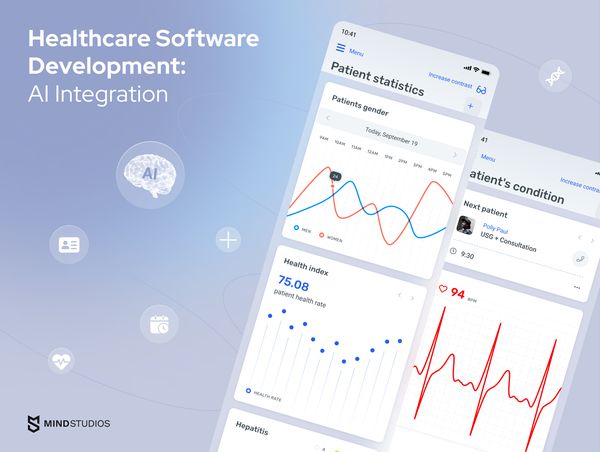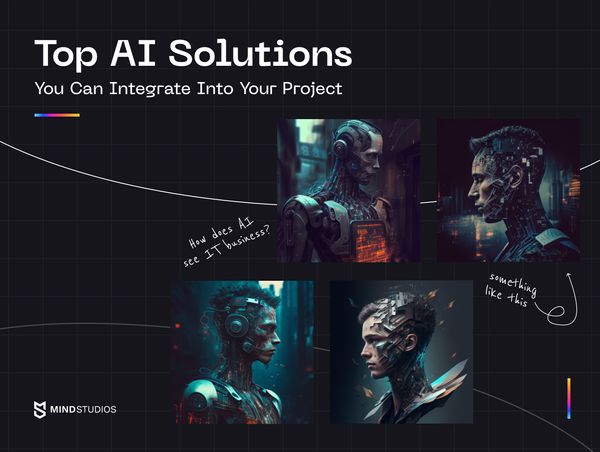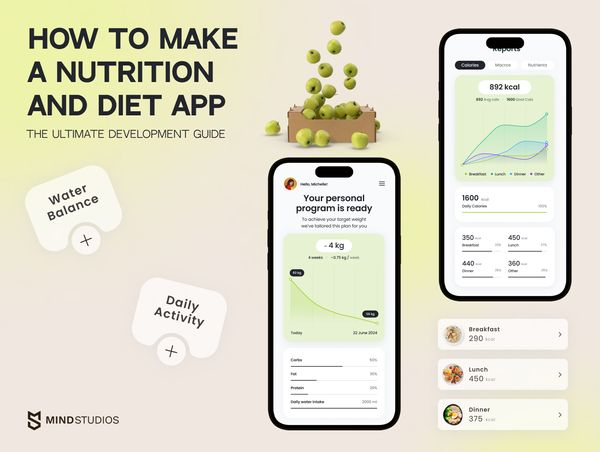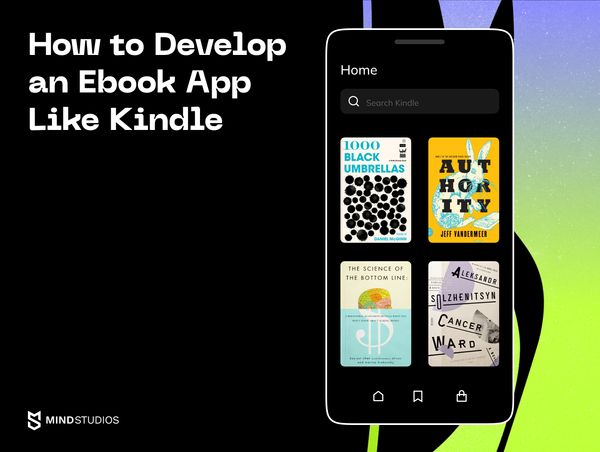
ChatGPT, the AI wonder everyone is talking about, managed to become a global sensation in a matter of days. Since November 2022, when the product by OpenAI was launched, the interest in app and web development with ChatGPT has skyrocketed, and for good reason.
So, how did it manage to score a $10 billion investment in such a short period of time? Is it really that promising? Can companies start utilizing it? And how to build an artificial intelligence app or a website enhanced with NLP functionality that benefits businesses?
When writing this article, we explored the benefits and limitations, its main use cases, and ideas for how business owners from various industries can use it right now. And, as usual, we share an applicable guide on how you can build an AI website or application.
Why is it worth making an AI application or website?
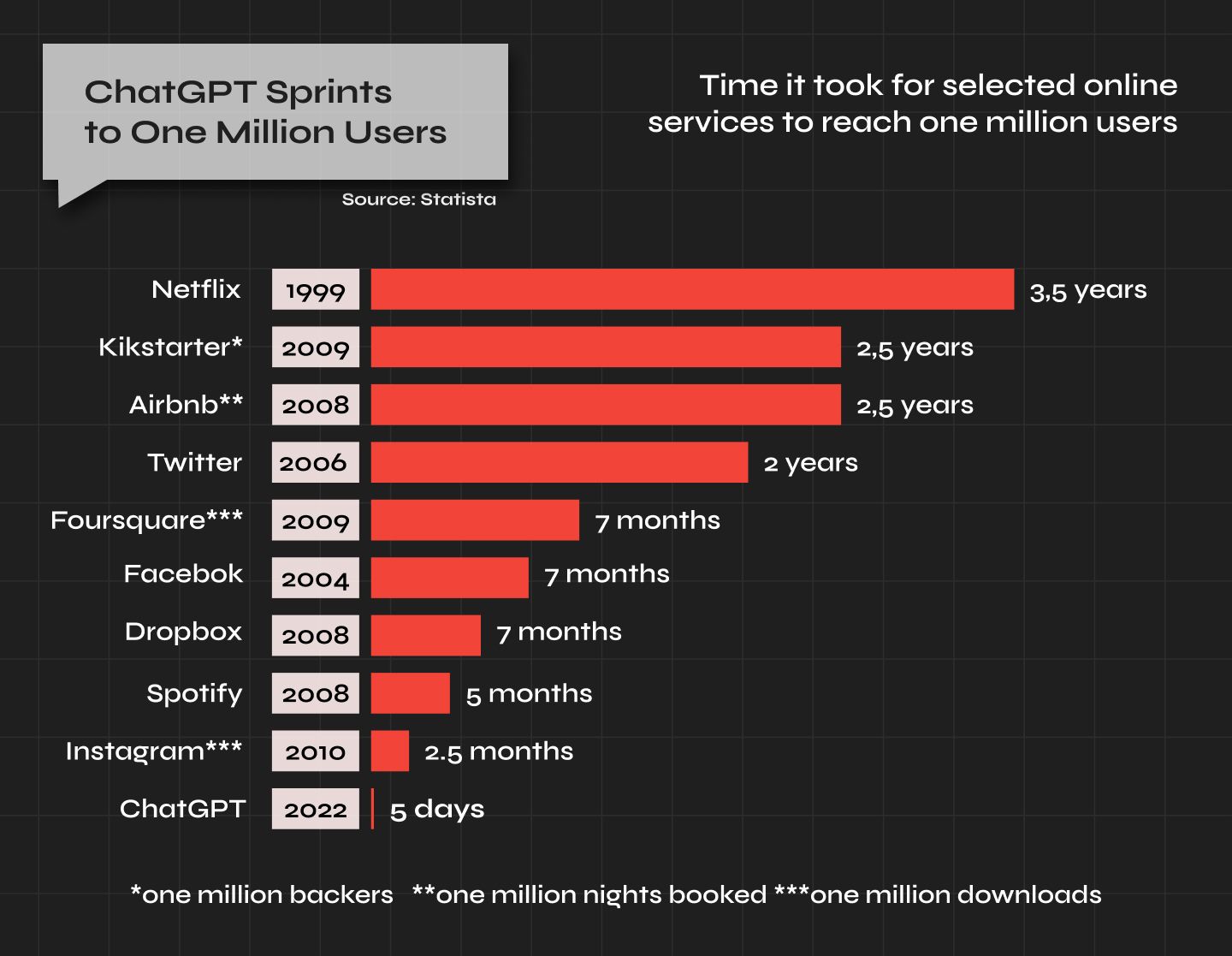
[Source: Statista]
Artificial intelligence application OpenAI has earned the right to be called a tech revelation: in November 2022, it took the service just 5 days to reach one million users. To compare, Twitter reached this number in 2 years, Facebook did it in 10 months, and Spotify — in 5 months. So, what is ChatGPT, and how did it become so popular in such a record-breaking period of time?
Developed by OpenAI, ChatGPT is an AI service that uses advanced natural language processing (NLP) and lets users engage in human-like question-and-answer sessions with a chatbot.
For instance, you can ask it to write feedback on your teammate’s performance. Or create a dinner recipe from the ingredients you have in the fridge. Or debug code for you. The answers are often surprisingly extensive, articulate, and human-like — you simply need to be as precise with your prompts as possible.
Surely, we can either hate that AI is taking over the tasks we are used to performing, or embrace it and take advantage of these new tools. But no matter the approach, the fact remains that applications based on AI will eventually crawl into almost any industry imaginable.
So, why not be among the first ones to adapt to it? Whether you are thinking about building a product focused solely on AI functionality or just enhancing your existing platform, these five benefits of building AI applications might convince you to go through with the idea.
Improved efficiency of NLP-related tasks
ChatGPT has been trained on an enormous amount of human language dataset consisting of 300 billion words. This allows it to generate human-like responses to numerous inquiries, no matter how complicated or weird they get.
What is more, users can give AI instructions on the style and complexity of these responses. For instance, the service can easily explain concepts like quantum physics to an 8-year-old. Or it can describe a Granny Smith apple as Donald Trump would do it (that’s a real request the team of Because News podcast put in).
In certain cases, this functionality arguably makes ChatGPT superior to Google. It can be helpful to all kinds of users, from marketers trying to come up with ad slogans to parents of a toddler who are bombarded with never-ending “how” and “why” questions.
Ability to learn and improve with more users
For now, ChatGPT can generate very believable, but factually inaccurate responses, and that is one of its major drawbacks. However, as the user input increases, the service trains and enhances its answers to be more helpful.
For those who decide to create an AI chatbot app, this means that with more users the service will improve and provide a better user experience. Before enhancing your software with an AI application, for example chatbot, you can release this new feature to a limited number of users, let them know that you are testing this new functionality, and ask for feedback.
Opportunity to enhance user experience with chatbots
Unlike usual chatbots, Building an AI-based chatbot can potentially engage in conversations that don’t feel like users are communicating with a regular chatbot. What is more, the messages generated with this AI model can be personalized to a specific user, since the service can be trained on FAQs and integrated with a CRM (customer relationship management) system.
ChatGPT can joke when appropriate, demonstrate empathy, make relevant suggestions, and thus create conversations that have an impact on users.
In addition, the model can help companies go global by breaking down language barriers. ChatGPT has been trained to respond in different languages, as well as translate copy on your website or app. However, even though it can already understand idioms, human supervision is still required to make sure the text is accurate.
What do you need to create a project based on ChatGPT?
If you are already sold on the idea of making AI part of your software product, and don’t know how to use ChatGPT to create a website or app NLP feature, here are three crucial steps to get the process started.
1. Define project requirements, business goals, and budget
A task to develop a an AI application is quite a vague one. You may want to build an app focused solely on the model’s translation function, or you may need to enhance your existing eCommerce website with a ChatGPT-powered chatbot. Obviously, the scope of work for these two cases would be drastically different.
So, here is a list of questions you need to answer before you start looking for a software development team:
- Are you building a product from scratch or scaling an existing product?
- What type of software product do you want to build?
- Do you want to ccreate an artificial intelligence website or build a mobile application? If you pick an app, is it going to be for Android, iOS, or both?
- What are the key goals of this project, and how are they going to benefit your business?
- What budget are you ready to allocate to this project?
2. Choose the development team
Once you know the answers to the questions above, you can start looking for the team to implement it. The most popular platforms to do this are Clutch and GoodFirms. There, you can filter out the candidates based on their hourly rate, the company’s experience in the field, and other requirements you might have.
You can read about the process of searching for the perfect web app development partners in our guides on outsourcing web development and mobile app development.
3. Decide on the tech stack
Once you find the development team, together you can choose the technologies to use over the course of project implementation.
If the team will be building the website or app from scratch, it will have to determine the programming languages, frameworks, databases, cloud platforms, and more. However, if you are just scaling the existing product with AI functionality, all you need is to work with a suitable API. We’ll explain more about that in the next section.
The development process for an AI app or website
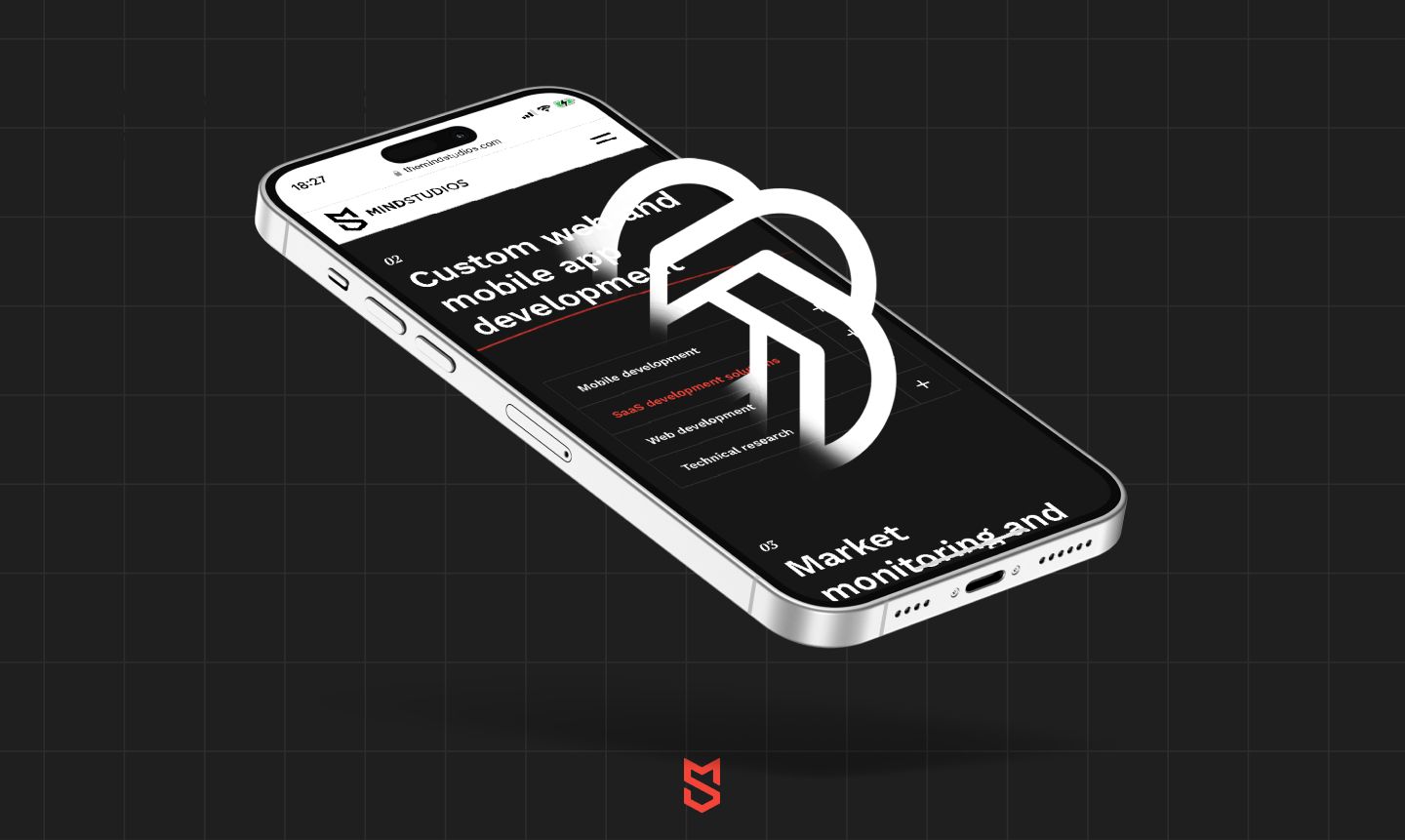
Let’s assume your product is built and ready to be enhanced with the ChatGPT model. This can be anything, from adding a translation feature to building a customer service bot. Now let’s go through the process of integrating the model into your product. There are three main ways to do the job:
1. Using an API
To put it simply, an API (application programming interface) is an intermediary that allows two systems to connect and work together. OpenAI has an API that provides access to ChatGPT AI and allows you to connect it to your website or app.
To do so, you need to sign up for the API key that will later be used to make API calls (requests that enable the interaction) from your platform. Then, after choosing the suitable programming language, you will have to write a function that takes the cue (an API call) and sends it to OpenAI so that the latter can generate a reply using ChatGPT.
It’s important to test the function and make sure it’s bug-free — otherwise, it might do more bad than good.
2. Working with a pre-built library or an SDK
Another option for integrating AI functionality into your platform is using ready-made libraries or SDKs (software development kits).
One of the examples is Hugging Face, a community and data science platform. It provides access to a JavaScript library that developers can use for ChatGPT integration into websites.
3. Integrating pre-built AI chatbots
There already are some ready-made chatbots based on ChatGPT and other NLP models ready for integration. For instance, you can use Botfront.io to enhance an AI-powered chatbot feature to your product.
All of these methods are fine to work with. However, we view the option with the API as the most efficient one since it would allow our team to customize the design and functionality of the ChatGPT-based features to meet your specific requirements.
If all this sounds overly complicated — feel free to reach out with any questions you have. During the initial consultation, our team will walk you through the process step by step and explain how to build an artificial intelligence app or website in the most efficient way possible.
Features for your AI solution based on ChatGPT
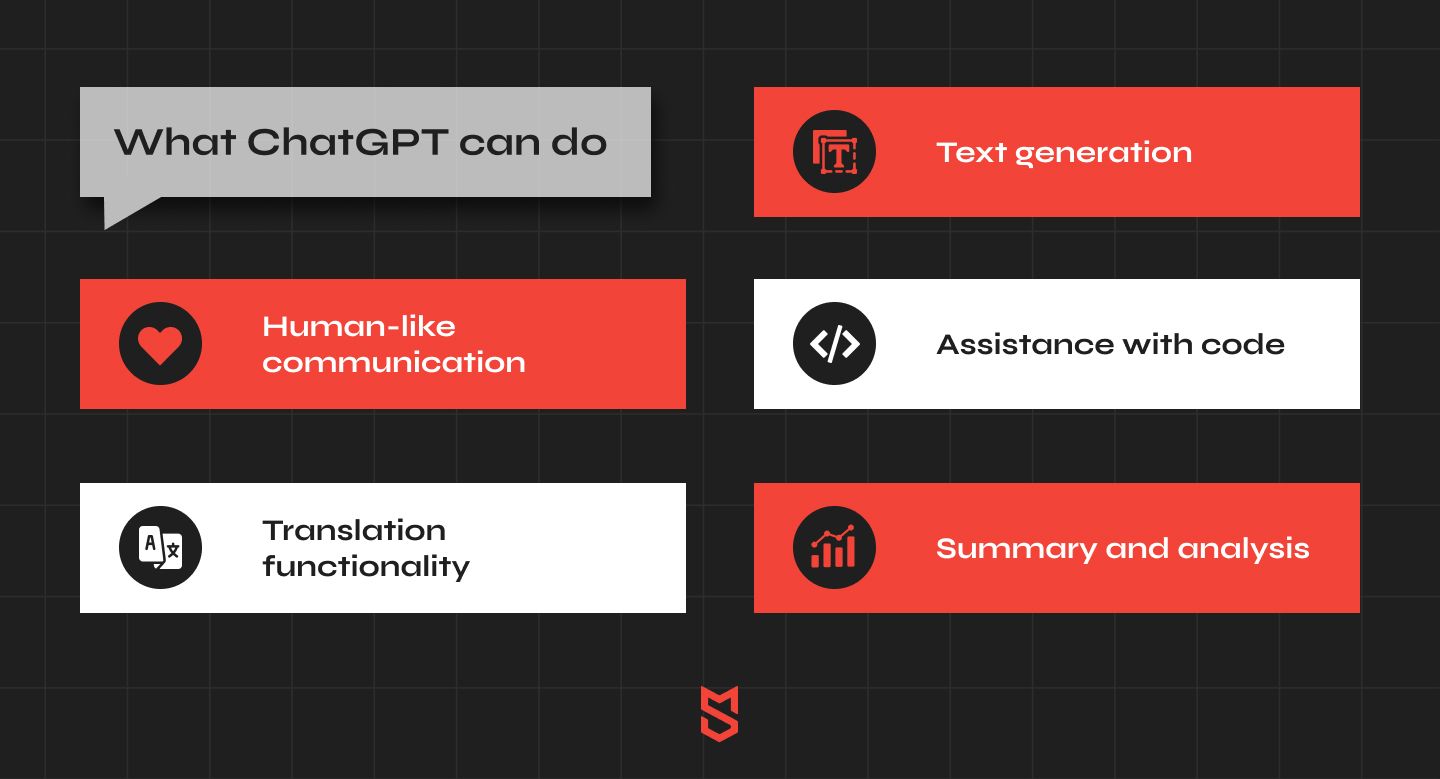
The fact that Microsoft is willing to invest literally billions into ChatGPT most definitely means that the list of functions the service provides will grow. However, as of now, these are the key features you can enhance your AI application with as of February 2023.
Human-like communication
Since ChatGPT is a natural language processing tool, it first and foremost serves a conversational AI for healthcare and other industries, engaging in a human-like conversation with its users. The service can even adjust its tone of voice depending on the prompts it receives.
Translation functionality
Though ChatGPT was mainly created to understand and generate text in English, it also knows at least 95 natural languages and can assist users with translation. The quality of translation though varies from language to language and depends on the complexity of the text generated.
Summary and analysis
AI applications can find and transform large or complicated pieces of information into a comprehensible summary, which means it can be used as an enhanced search engine. What is more, it can classify the information into different predefined categories, compare data, and produce ranking-based responses.
Text generation
The database used by ChatGPT has 300 billion words, so it can create all kinds of content, like emails, essays, scripts, sales slogans, and so on. However, it’s important to keep in mind that artificial intelligence detectors usually can determine that ChatGPT’s copy wasn’t created by a human.
Assistance with code
To use ChatGPT for writing and reviewing code, you have to be able to know which prompts to use, meaning you need to have at least some knowledge of coding standards. But even though the service is not yet advanced enough to create a high-quality software product from scratch, it can help software developers to speed up certain development processes.
ChatGPT use cases. Who can benefit from using the ChatGPT algorithm?
The opportunities to use ChatGPT features from the previous section are endless. However, some industries can — and already are trying out the new AI-based service to enhance their performance and optimize resources.
We’ve singled out five industries that are first in line to make an AI application using ChatGPT and benefit from it.
Marketing and sales
Contrary to typical stereotypes about AI content, pieces of content created by ChatGPT are not necessarily dry and unemotional. Depending on how specific the task is, it can be quite human-like. This makes it suitable for the following tasks:
- Generating ideas for marketing content
- Analyzing the needs and pain points of the target audience
- Creating marketing content, including product descriptions, video scripts, email drafts, and so on
- Adjusting ads and other content to users’ preferences, languages, etc.
What’s even more impressive is that ChatGPT can be used for lead generation and processing, freeing up sales specialists’ time so that they could deal with high-quality leads only.
How does it work exactly? The service can be trained to analyze the language used by leads and engage in communication with them up till the point when it detects that the lead is genuinely interested in cooperation. After that, the salespeople take the communication over to close the sale.
Customer service
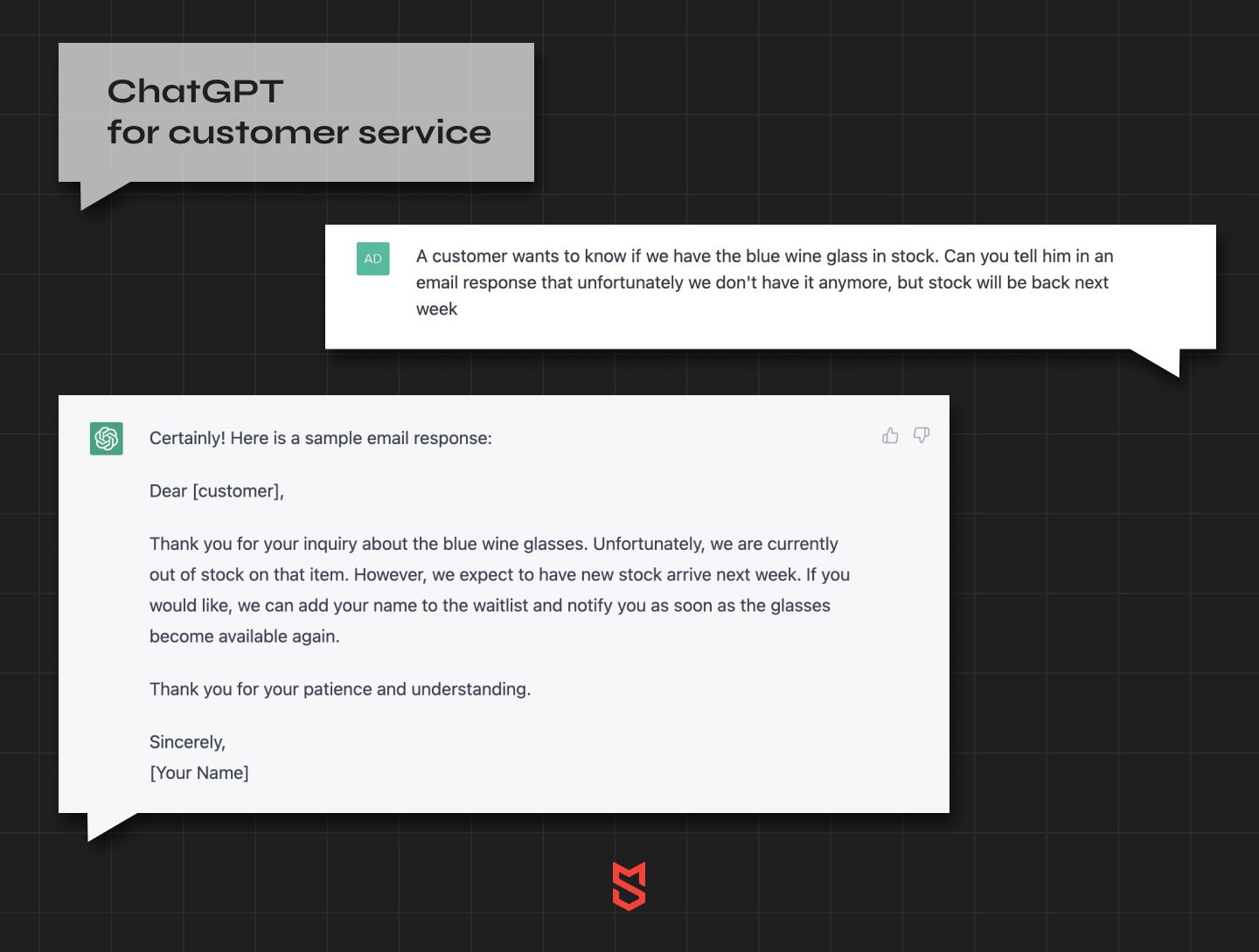
Since one of ChatGPT’s core features is chatbot functionality, it’s only natural to use it on platforms that already have chatbots — and those often are online retail stores, marketplaces, and appointment-based service providers.
Using ChatGPT as a customer service assistant can help businesses optimize their resources. It can also provide users with a superior customer experience regardless of the time of day or night, geographic location, or language of communication.
What exactly can such a chatbot do? Assisting customers with finding the right product and completing the order, providing personalized recommendations, and booking appointments are just a few of the tasks for an AI-based chatbot. What is more, it can be not just helpful but also funny and empathetic — and that’s a winning goal for ChatGPT.
Education and training
The summarization and explanatory functionality of ChatGPT can be valuable to anyone learning something: from a middle school student to a new employee going through the onboarding process.
To be more specific, students, employees, and anyone willing to grow professionally can use ChatGPT to dig deeper into the subject of their study and customize educational content to fit their current needs and progress. This is especially useful for specialists in industries that require ongoing training, like healthcare, law, finance, etc.
Healthcare and R&D
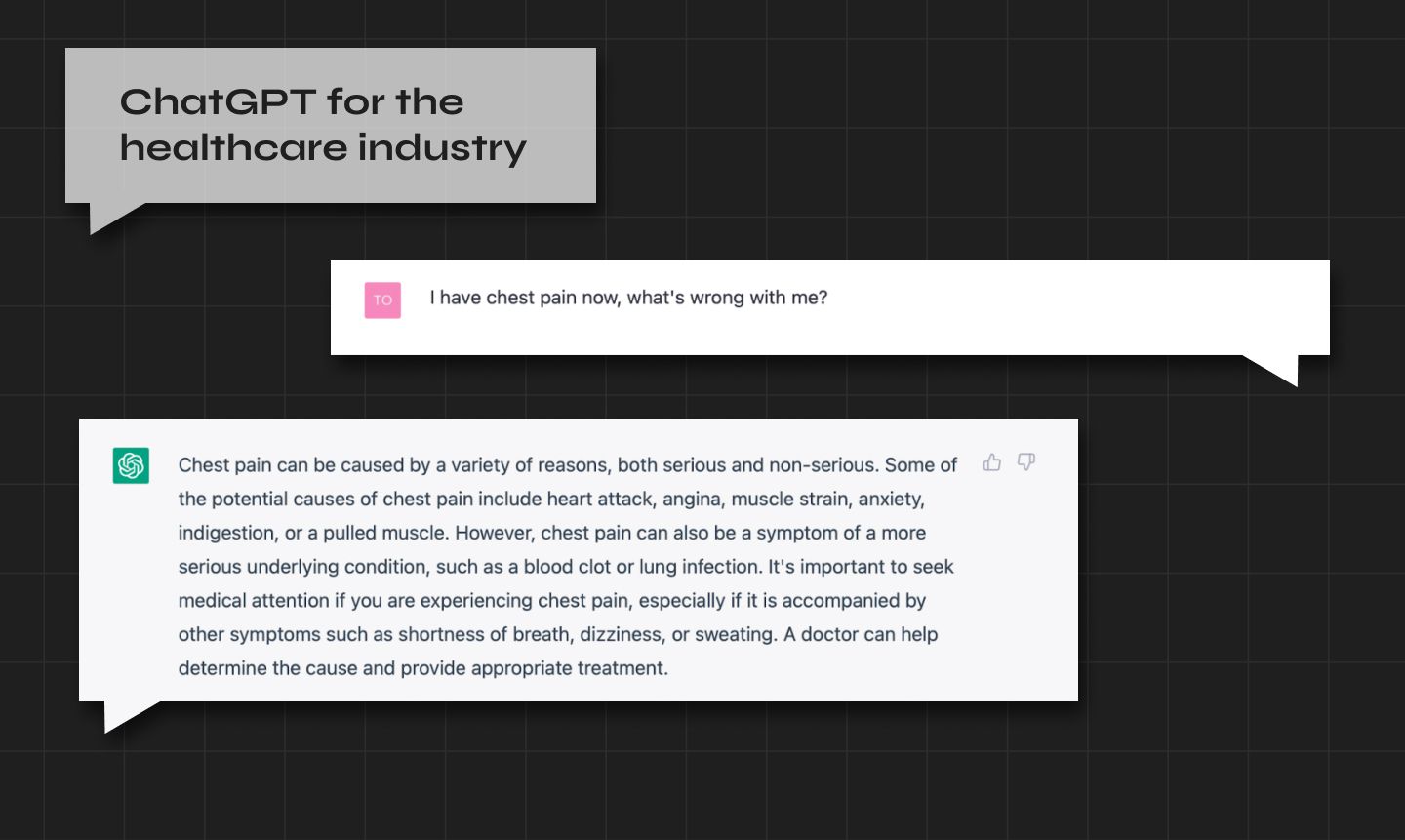
As we’ve mentioned before, ChatGPT has an incredible capability to process and summarize large amounts of complex data, which in some cases makes it superior to traditional search engines. This means that it can be used to help scientists get a deeper understanding of the human body and diseases — and thus facilitate the discovery of new drugs and medical solutions.
As for working directly with patients, the AI-powered bot can provide remote medical assistance, help users find the right healthcare specialist, assist with symptom checking, and more.
Keep in mind that no matter what you use ChatGPT for, it should be integrated into the healthcare systems (and any other platforms for that matter) with caution since it is still highly prone to errors.
Software engineering
ChatGPT is already capable of generating pieces of code and even programs in certain programming languages. However, for now, it’s nearly impossible to quickly and easily create a website or build an app with the ChatGPT model from scratch with no development experience. At least if you want to use the industry’s best practices and make the product bug-free.
The model needs specific step-by-step instructions to create code. Therefore, a person with no knowledge of software development processes simply won’t be able to provide those instructions, let alone check if ChatGPT’s answer is feasible.
On the bright side, it can be used as an AI-powered assistant to software engineers that can optimize their time. IT experts are already using ChatGPT to speed up certain tasks, like creating briefs, code documentation, or reviewing code. What is more, ChatGPT can be helpful to users who are just learning to code.
ChatGPT training methods
Knowing the possibilities ChatGPT has unlocked, one cannot help but wonder: how does all this work? In this section, we’ll explain the gist of the training methods used to improve this AI model.
ChatGPT is the most recent language model created by OpenAI and trained on an Azure AI supercomputing infrastructure. It is primarily focused on having interactive conversations with its users.
The model shows a considerable advancement above its predecessors in terms of accuracy, detail, and coherence of the text it generates. ChatGPT is an example of the next generation in OpenAI’s line of Large Language Models (LLM).
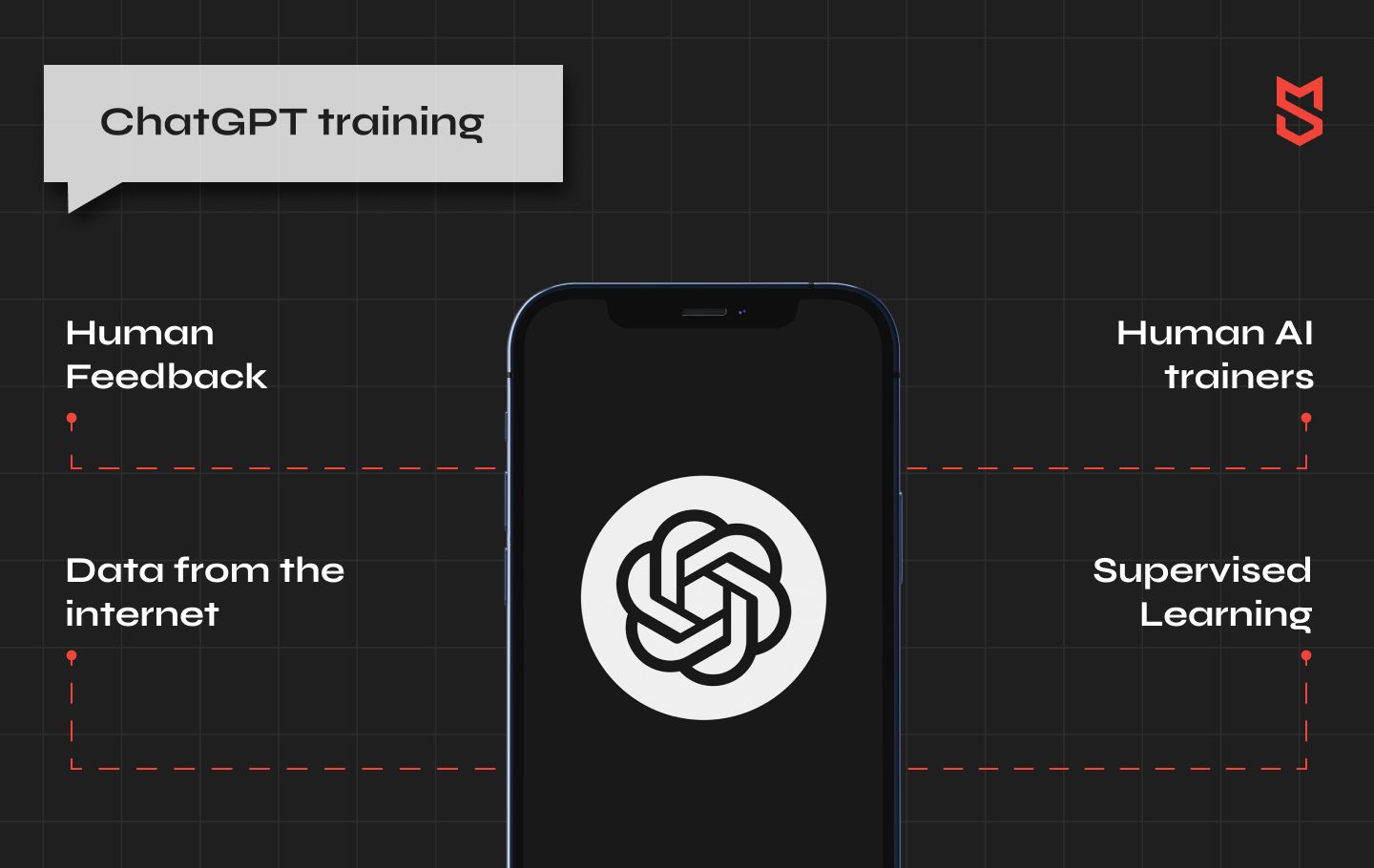
When working on ChatGPT, its creators used two primary training methods:
- Supervised Learning
- Reinforcement Learning from Human Feedback
The latter is what makes ChatGPT stand out.
The model’s predecessors were improved by increasing the amount of data fed to them, providing the models with a more diverse set of knowledge. But with ChatGPT, the creators used human feedback to basically help the AI model understand what the humans expect from it.
What is more, GPT-3,5 (on which ChatGPT is based) was trained on enormous amounts of data from the internet, including Reddit discussions, to help the AI model master the human-like style of communication.
The Reinforcement Learning from Human Feedback method is also aimed at minimizing harmful or biased output, so, even though such mishaps do happen, it’s a significant improvement compared to the previous models.
To fine-tune ChatGPT properly, human AI trainers were engaged in the process. To put it simply, the trainers played out the conversations in which they acted as both the user and the AI assistant while using model-written suggestions. Then, the creators collected and analyzed different model responses from those conversations and ranked them by quality.
Here are the three steps this method consists of as stated by OpenAI.
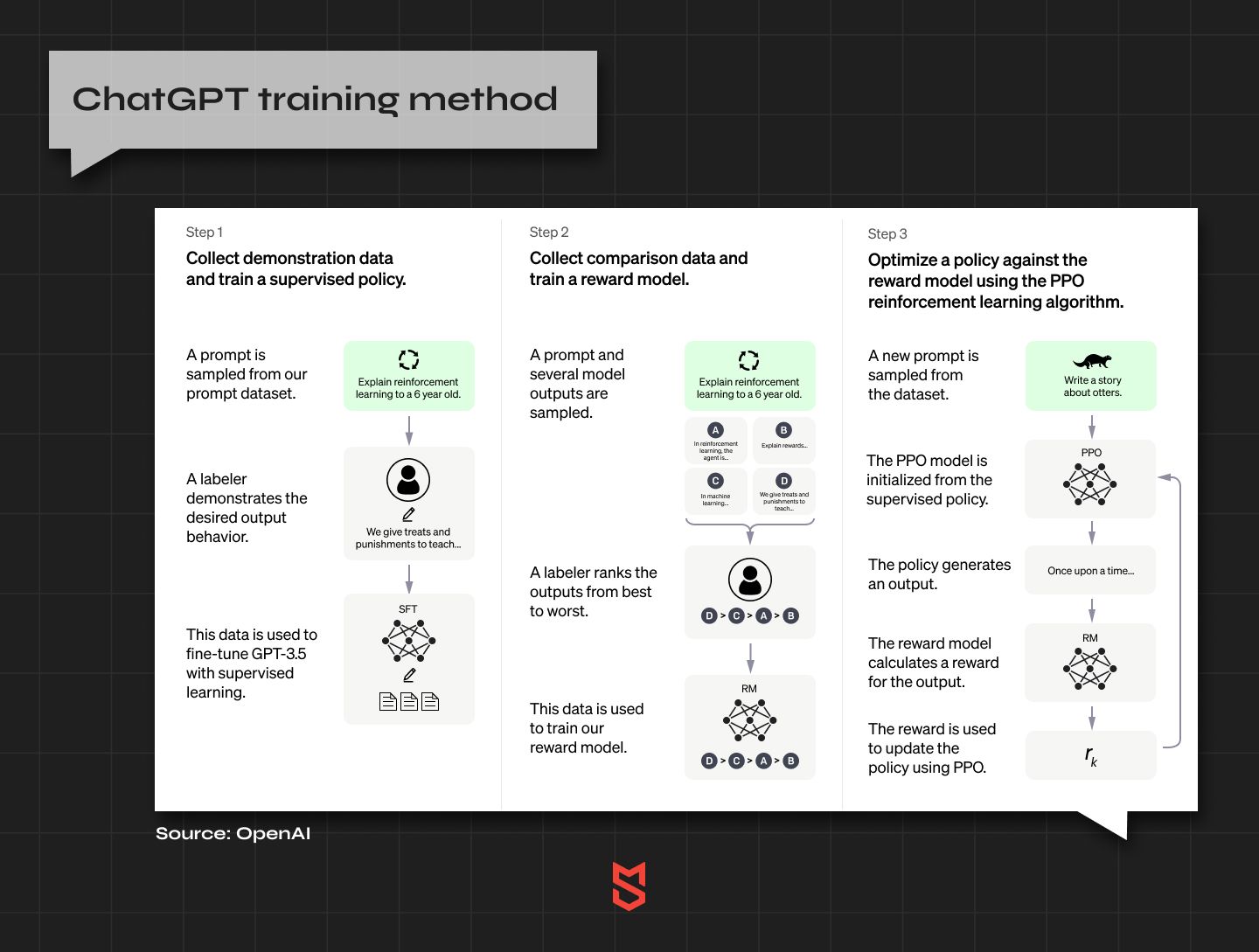
[Source: OpenAI]
ChatGPT's limitations to be aware of
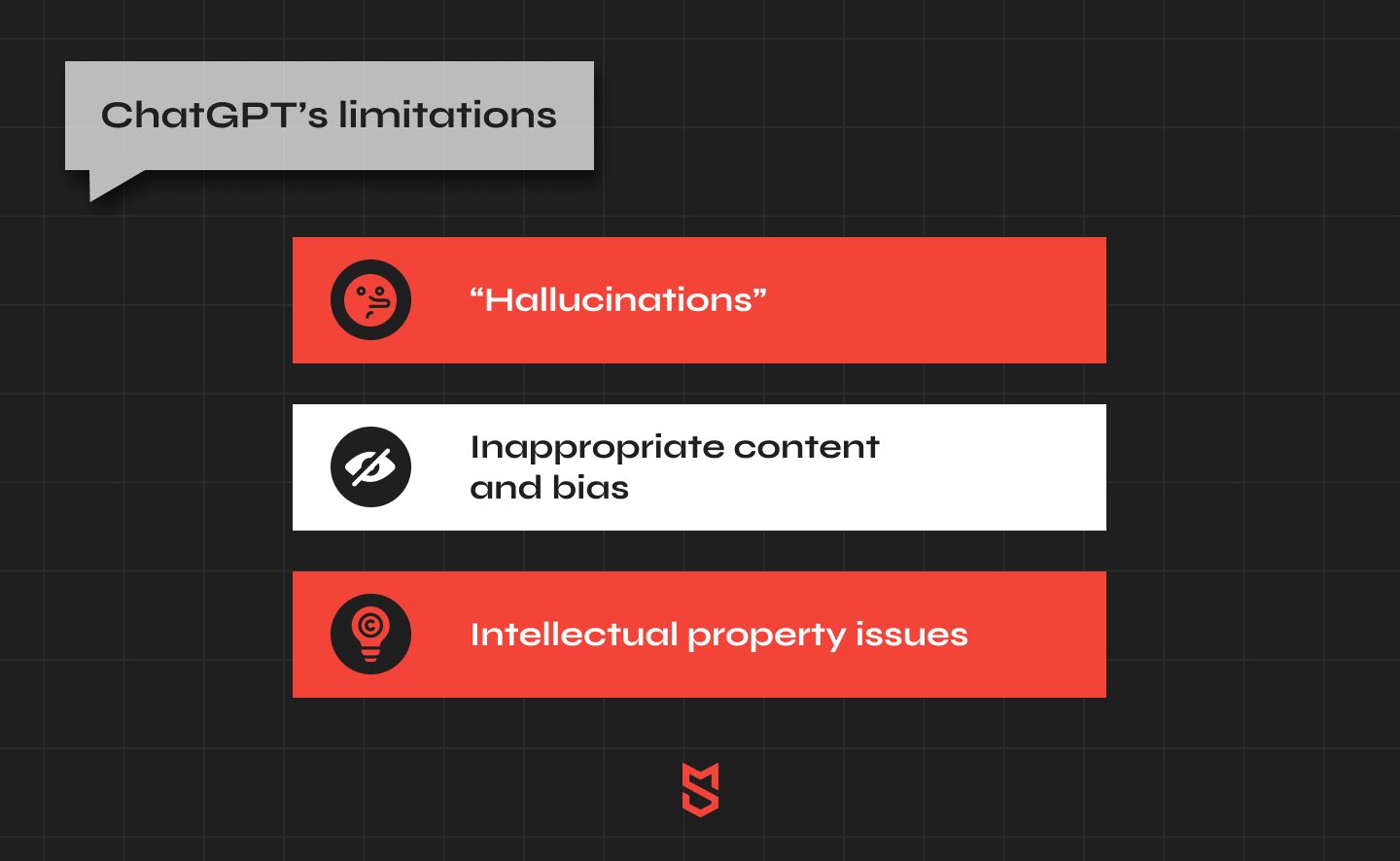
ChatGPT didn’t appear out of thin air. In fact, it has several predecessors, all developed by OpenAI: GPT-1 launched in 2018, GPT-2 from 2019, and GPT-3 presented in 2020. However, even though ChatGPT and InstructGPT (both launched in 2022) are the most evolved versions of OpenAI’s generative re-trained transformer, they still have certain disadvantages.
Here are the three limitations of ChatGPT to be cautious about.
1. “Hallucinations”
One of ChatGPT’s major drawbacks is that it can provide responses that sound plausible but are in fact incorrect. What is more, it often “hallucinates”, generating fake or misleading information based on the data it has access to with no warning.
This happens so frequently that the company Got IT created an AI to detect and address ChatGPT hallucinations. In theory, the program can be trained to be more ethical in terms of providing fake information, but then it would decline numerous requests if it is not sure the answer will be correct.
2. Inappropriate content and bias
ChatGPT model hasn’t yet been trained to effectively detect offensive or harmful instructions, as well as to filter out inappropriate content from the database it uses.
What is more, since ChatGPT uses a database with content created by humans, it can also be racist, sexist, and biased in many other ways — just like humans. And this is a problem even OpenAI’s CEO, Sam Altman admits. In addition, ChatGPT often fails to ask clarifying questions when the requests are obscure.
On the plus side, the model is constantly evolving, specifically, thanks to feedback from its users and also to the Moderation API used to regulate the content. And with OpenAI implementing a ChatGPT Plus $20-a-month subscription version, it is in the company’s best interests to fix these issues as soon as possible.
3. Intellectual property issues
As with most generative AI products, ChatGPT also raises some unique challenges regarding intellectual property rights. Marketers, writers, artists, and other creators ask questions that have yet to be answered.
Who can claim ownership of the ideas created as a result of a user’s prompt? What is the course of action when the AI plagiarizes something based on the data it uses? Will there be serious liabilities businesses will have to face when working with AI-based products? These are the dilemmas that AI users will have to deal with sooner or later.
To sum up, these limitations prove ChatGPT cannot be left unsupervised with tasks of high importance yet. And even though it will undoubtedly learn and get better, some big questions (like the one about intellectual property rights) need to be addressed.
Nonetheless, ChatGPT is too big of a player in the market to dismiss it. Besides, there already are use cases for AI where the liability risks are low. And if you decide to build a ChatGPT-based product with Mind Studios — our team will study all the hazards of using this AI product for your particular idea and find solutions to bring them to a minimum.
Conclusion
For now, we can’t say for sure that AI-powered products like ChatGPT will be able to completely replace skilled workers. What we do know is that currently there is an opportunity to create powerful human-machine cooperation models to enhance business processes in multiple industries.
What is more, while humans train ChatGPT and other similar AI-based products, the latter also help humans become better at their job. And people who accept this fact and adopt the new technology early on can have a head start over those who ignore it.
After reading this article, you might be wondering whether an idea to enhance your business with AI applications is viable — and Mind Studios is here to help you make an informed decision about it.
Fill in a short contact form, and our business development team will schedule a free consultation to hear your idea out and offer you the most efficient strategy for its implementation.

